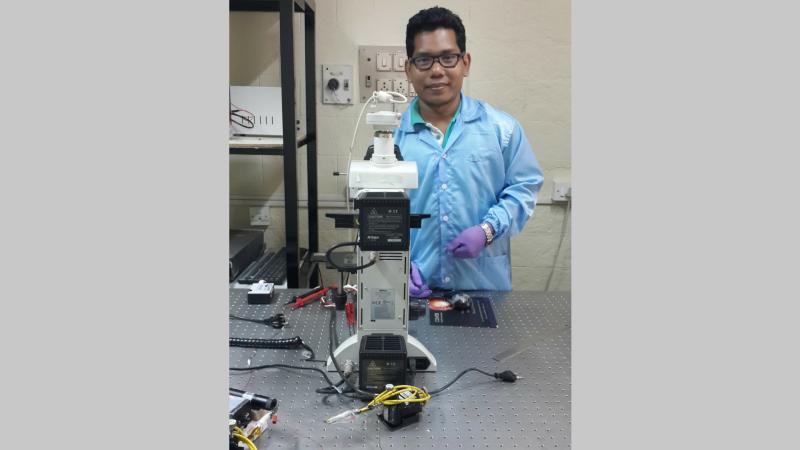
Imagine your phone or your laptop that could charge on its own without you having to plug it in! While it might look like a page from the distant future, it may soon be possible, thanks to a pathbreaking research from the Indian Institute of Science, Bengaluru. In a recent research published in the journal of Energy Technology, and funded by the Department of Science and Technology (DST), the researchers have designed a supercapacitor that can be charged using Ultraviolet (UV) light.
Supercapacitors are widely used in consumer electronics, inverter batteries, sensors, voltage stabilizing systems, among others. A supercapacitor consists of two electrodes composed of electrochemically active porous materials with larger surface area separated by an ion permeable membrane. The device ‘stores’ the charge as positive and negative ionic charges build up on the two electrodes and separated by the barrier layer to prevent them from combining with each other.
“Among the energy storage devices, supercapacitor displays unique mechanism to store energy in the form of electrochemical energy, similar to a battery with high-power density, rapid charge/discharge rates, long cycling life, environmental compatibility, etc. Our work mainly highlights the objective for direct use of UV light energy to store charge in supercapacitor”, says Mr Buddha Deka Boruah, a research scholar at IISc, who worked on this research along with Prof Abha Misra.
Conventionally, either carbon based nanomaterials like activated carbon, carbon nanotubes, reduced graphene oxide, or metal oxide nanomaterials like manganese dioxide, ruthenium oxide, nickel hydroxide and nickel cobalt oxide are used to make supercapacitors’ electrodes. In this study, the researchers have used novel electrodes based on integration of UV light sensitive zinc oxide nanorods and electrochemically active nickel cobalt oxide.
When light falls on zinc oxide, photo-charges are released and these add on to the number of charges present that builds up on the oppositely charged electrodes. More charge accumulate on the electrodes, thus result in larger storage of charge or capacitance. The use of these integrated nanostructure, also gives the device a compact structure which can be used as a self-powered energy storage cell.
“We have measured the energy storage performance of the new supercapacitor in both the absence and the presence of UV light. A large increase in the energy storage performance of the supercapacitor was observed under UV light, which makes it a self-powered energy device”, says Mr. Boruah. In addition, the researchers observed that the capacitance or the charging ability of the supercapacitor could be retained for 98.5 to 97% even after there have been 2000 charging and discharging cycles -- both in the presence and absence of UV radiation. This means that the lifetime of such a supercapacitor can be very long.
The researchers are now exploring to design supercapacitors that not only charge with UV light, but also with visible light, thus harnessing all the light available from the Sun. “This work has motivated us to bring more functionality in supercapacitor application by introducing novel physical concepts. External power free charging of the supercapacitor is an advanced step in this direction” says Prof Misra.
The possible applications of such ‘self-charging’ devices are plenty. Automobiles, wind turbines, consumer electronics, stand-alone street lights, among others. They can be used in the broader fields of medicine, military, electronics, and transportation. This research is a right step in the direction of an energy-sufficient world.






